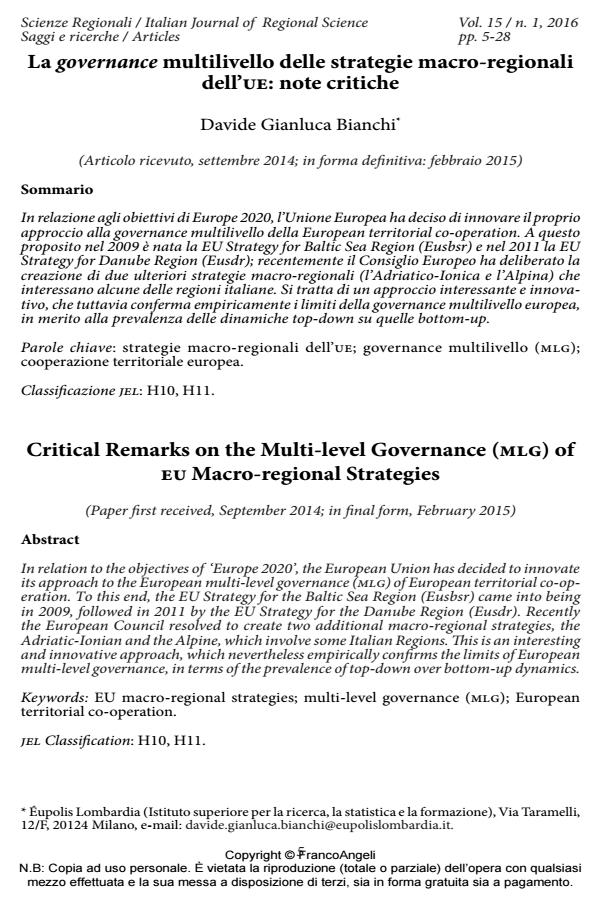Critical Remarks on the Multi-level Governance (mlg) of eu Macro-regional Strategies
Journal title SCIENZE REGIONALI
Author/s Davide Gianluca Bianchi
Publishing Year 2016 Issue 2016/1
Language Italian Pages 23 P. 5-27 File size 235 KB
DOI 10.3280/SCRE2016-001001
DOI is like a bar code for intellectual property: to have more infomation
click here
Below, you can see the article first page
If you want to buy this article in PDF format, you can do it, following the instructions to buy download credits

FrancoAngeli is member of Publishers International Linking Association, Inc (PILA), a not-for-profit association which run the CrossRef service enabling links to and from online scholarly content.
In relation to the objectives of ‘Europe 2020’, the European Union has decided to innovate its approach to the European multi-level governance (mlg) of European territorial co-operation. To this end, the EU Strategy for the Baltic Sea Region (Eusbsr) came into being in 2009, followed in 2011 by the EU Strategy for the Danube Region (Eusdr). Recently the European Council resolved to create two additional macro-regional strategies, the Adriatic-Ionian and the Alpine, which involve some Italian Regions. This is an interesting and innovative approach, which nevertheless empirically confirms the limits of European multi-level governance, in terms of the prevalence of top-down over bottom-up dynamics.
Keywords: EU macro-regional strategies; multi-level governance (mlg); European territorial co-operation.
Jel codes: H10, H11.
- Implementing the green infrastructure concept in practice: an example of the EU-strategy for Alpine Region Naja Marot, Barbara Kostanjšek, Nadja Penko Seidl, Joern Harfst, in Journal of Environmental Policy & Planning /2024 pp.325
DOI: 10.1080/1523908X.2024.2383685
Davide Gianluca Bianchi, La governance multilivello delle strategie macro-regionali dell’ue: note critiche in "SCIENZE REGIONALI " 1/2016, pp 5-27, DOI: 10.3280/SCRE2016-001001